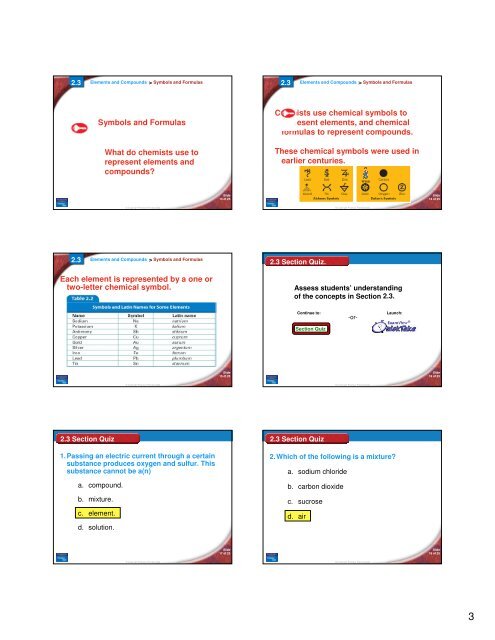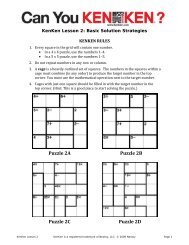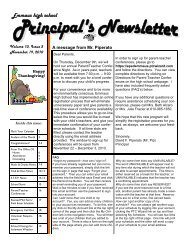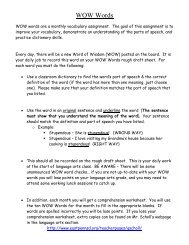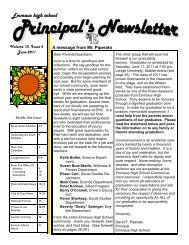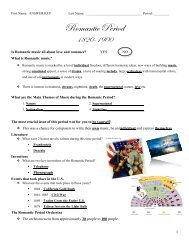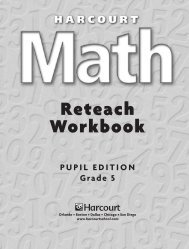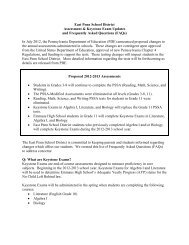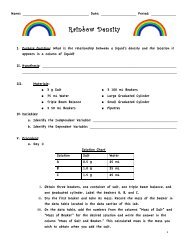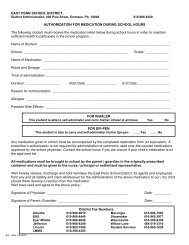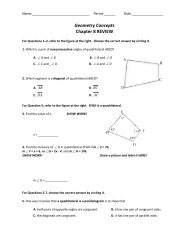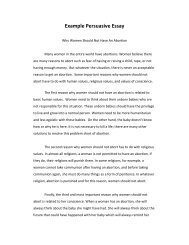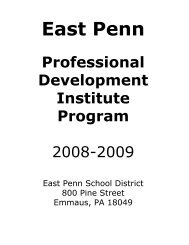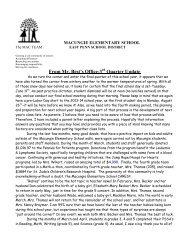ch2-ppt-notes
ch2-ppt-notes
ch2-ppt-notes
Create successful ePaper yourself
Turn your PDF publications into a flip-book with our unique Google optimized e-Paper software.
2.3<br />
3<br />
Elements and Compounds > Symbols and Formulas<br />
2.3<br />
Elements and Compounds > Symbols and Formulas<br />
Symbols and Formulas<br />
What do chemists use to<br />
represent elements and<br />
compounds?<br />
Chemists use chemical symbols to<br />
represent elements, and chemical<br />
formulas to represent compounds.<br />
These chemical symbols were used in<br />
earlier centuries.<br />
Waldo<br />
Slide<br />
13 of 25<br />
Slide<br />
14 of 25<br />
© Copyright Pearson Prentice Hall<br />
© Copyright Pearson Prentice Hall<br />
2.3<br />
Elements and Compounds > Symbols and Formulas<br />
2.3 Section Quiz.<br />
Each element is represented by a one or<br />
two-letter chemical symbol.<br />
Assess students’ understanding<br />
of the concepts in Section 2.3.<br />
Continue to:<br />
Section Quiz<br />
-or-<br />
Launch:<br />
Slide<br />
15 of 25<br />
Slide<br />
16 of 25<br />
© Copyright Pearson Prentice Hall<br />
© Copyright Pearson Prentice Hall<br />
2.3 Section Quiz<br />
1.Passing an electric current through a certain<br />
substance produces oxygen and sulfur. This<br />
substance cannot be a(n)<br />
a. compound.<br />
b. mixture.<br />
c. element.<br />
d. solution.<br />
2.3 Section Quiz<br />
2.Which of the following is a mixture?<br />
a. sodium chloride<br />
b. carbon dioxide<br />
c. sucrose<br />
d. air<br />
Slide<br />
17 of 25<br />
Slide<br />
18 of 25<br />
© Copyright Pearson Prentice Hall<br />
© Copyright Pearson Prentice Hall<br />
3


